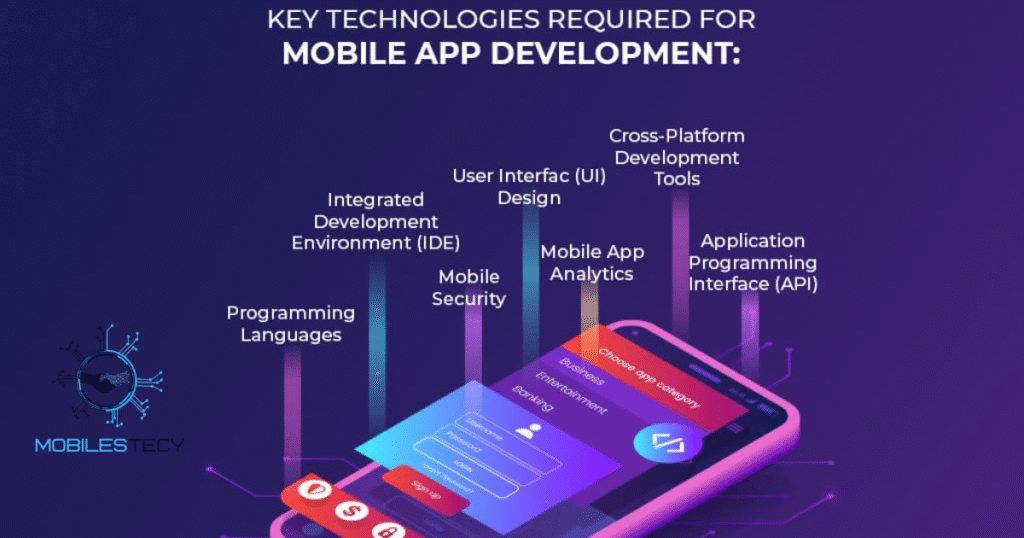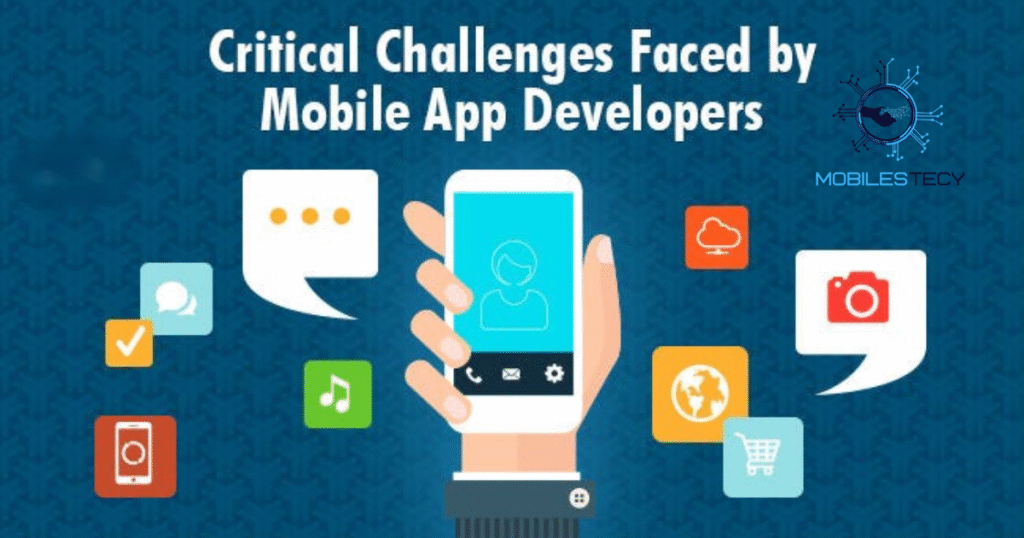Mobile development has transformed the digital world across all major industries today. From entertainment to finance, apps have redefined how users interact every day. With powerful smartphones, developers craft seamless experiences on small, portable screens. Mobile apps must be fast, intuitive, and optimized for varied user needs. This demand drives constant innovation and competition among mobile development platforms worldwide.
Developers choose between native, hybrid, or cross-platform approaches for applications. Each method offers unique benefits, challenges, and compatibility with different devices. Native apps excel in performance but require separate codebases per platform. Hybrid and cross-platform tools simplify development but may sacrifice some performance. Choosing the right method depends on budget, timeline, and target audience.
Languages like Swift, Kotlin, Dart, and JavaScript dominate the mobile scene. Frameworks such as Flutter, React Native, and SwiftUI streamline development work. APIs, cloud integration, and responsive design are essential for modern app features. Security, scalability, and user experience remain top priorities for mobile developers today. Understanding mobile trends ensures relevance and effectiveness in a fast-moving market.
Table of Contents
The Evolution of Mobile Development

The journey of mobile apps started with simple tools and limited features. Early devices supported only basic utilities like calculators, calendars, and notes. As smartphones advanced, users demanded more power and smarter app capabilities. iOS and Android emerged as dominant platforms, shaping development globally. Mobile apps quickly transitioned from luxuries to essential parts of daily life.
Developers once coded directly in device-specific languages with limited documentation. Now, robust SDKs and APIs offer comprehensive support for mobile development. Tools like Xcode and Android Studio simplify complex processes into workflows. Cross-platform demand gave rise to frameworks like Flutter and React Native. Today’s environment supports rapid prototyping, testing, and global app deployment.
Mobile development has become more than coding—it’s about user experience too. Designers and developers collaborate closely to build visually appealing interfaces. Accessibility, speed, and responsiveness define the success of modern mobile apps. With new tech like AR and AI, mobile experiences feel more immersive. The evolution continues as 5G and edge computing reshape mobile innovation.
Key Technologies in Mobile App Development
Programming languages form the backbone of all successful mobile app projects. Swift is used for iOS, while Kotlin rules the Android development scene. Cross-platform tools use Dart or JavaScript to write universal mobile code. Each language has strengths and trade-offs depending on project requirements. Developers must choose wisely to ensure compatibility and performance goals.
Frameworks bring speed and structure to building feature-rich mobile applications. Flutter offers beautiful UIs with fast rendering using one codebase. React Native combines JavaScript flexibility with native platform integration features. SwiftUI and Jetpack Compose are transforming native development on each platform. These tools reduce boilerplate code and enhance development productivity significantly.
Databases, APIs, and cloud services extend app functionality beyond the device. Firebase, Realm, and SQLite provide storage and real-time synchronization tools. APIs allow apps to access payment systems, GPS, and social platforms. Cloud integration enables data backup, user authentication, and serverless functions. Together, these technologies ensure a complete, scalable mobile application solution.
Benefits of Cross-Platform Mobile Development

Cross-platform frameworks allow developers to write code once for all platforms. This reduces development time and cost while maintaining consistent user experience. Teams can launch apps faster without managing multiple separate codebases. Popular frameworks like Flutter and React Native make this process efficient.
Maintenance becomes easier when changes apply across iOS and Android simultaneously. Updates and bug fixes are deployed with minimal duplication of effort. Code reusability improves scalability, especially for startups and small development teams. Cross-platform apps now deliver performance close to native alternatives today.
Best Practices for Efficient Mobile Development
Planning is crucial before writing any lines of code for your app. Define user needs, set milestones, and create a minimum viable product. Wireframing helps visualize layout and flow before UI development begins. Thorough research reduces redesign and improves overall user satisfaction later. Good planning saves time, money, and avoids unnecessary development cycles.
User interface and experience (UI/UX) determine how users feel about apps. Simple navigation, clear icons, and readable fonts enhance overall usability. Consistent color themes and interactive feedback improve user trust and retention. Responsive designs must adjust to various screen sizes and orientations. Animations and transitions should be smooth without draining battery or speed.
Testing is essential to deliver bug-free and stable mobile applications. Automated testing helps catch regressions during fast development iterations. Manual testing ensures real-world usability across different devices and conditions. Crash reports and user feedback are invaluable during beta testing phases. Continuous testing and integration build a more polished final product.
Future Trends in Mobile Development

Artificial intelligence is transforming how apps understand and serve users today. Voice assistants, chatbots, and personalized recommendations all use AI technology. Mobile apps now analyze data in real time for smarter decisions. AI also enhances photography, shopping, and health monitoring features. Developers must adapt their skills to integrate these intelligent capabilities.
Augmented reality (AR) is enhancing user experiences across entertainment and business. Apps overlay virtual objects onto real environments through phone cameras. AR is revolutionizing gaming, interior design, education, and retail apps. Combined with AI, AR offers interactive, adaptive, and engaging digital layers. Apple and Google both support AR tools for developers to explore.
5G and edge computing promise faster, more responsive mobile experiences soon. These technologies allow real-time streaming, multiplayer gaming, and instant communication. Low latency networks will enable smart cities, connected cars, and IoT. Mobile apps must evolve to handle higher speeds and data throughput. Developers should prepare now to optimize apps for this changing infrastructure.
Challenges Faced in Mobile App Development

Mobile devices vary in screen sizes, hardware capabilities, and operating systems. Designing adaptable interfaces that perform well on all devices is difficult. Fragmentation across Android versions often causes unexpected bugs and performance issues. Testing across multiple devices is critical to ensure consistent user experience.
Security is another major concern in mobile app development lifecycle. Apps handle sensitive data like payments, location, and personal user information. Developers must implement encryption, secure APIs, and proper authentication systems. Failure to secure apps can lead to data breaches and legal consequences.
- Mobile apps must be optimized for speed, responsiveness, and performance.
- User feedback is essential for improving features and fixing bugs.
- Push notifications keep users informed and increase app retention rates.
- Battery and data usage should be minimized through efficient coding practices.
- App store optimization improves visibility and download rates significantly.
Faq’s
What are the main platforms used in mobile app development today?
The two major platforms are Android and iOS, dominating global usage. Developers often build for both to reach the widest possible audience.
Which programming languages are commonly used for building mobile applications?
Swift is used for iOS, Kotlin is preferred for Android development. Cross-platform tools use Dart, JavaScript, or C# for shared codebases.
How long does it take to develop a mobile application?
Basic apps take weeks, while complex apps may need several months. Time depends on features, platform, team size, and testing requirements.
What are the benefits of using cross-platform development frameworks today?
One codebase supports multiple platforms, reducing time and development cost. Faster updates, easier maintenance, and consistent UI are key advantages.
How important is user testing in mobile app development lifecycle?
Testing ensures the app works well across different devices and scenarios. It helps identify bugs, usability issues, and improves user satisfaction overall.
Conclusion
Mobile development continues evolving with new tools, trends, and technologies emerging. From native to cross-platform, each approach serves specific project goals. Understanding platforms, languages, and frameworks helps developers make informed decisions. Success in mobile development requires both technical skill and creative thinking. The goal is always to deliver smooth, engaging, and useful applications.
Developers must prioritize user experience, performance, and app security at all times. Modern users expect fast, intuitive, and responsive apps across all devices. Frequent updates, clear feedback channels, and testing boost long-term user retention. App stores favor high-rated apps that meet quality and performance benchmarks. Well-maintained apps build trust, increase visibility, and improve monetization opportunities too.
Looking ahead, trends like AI, AR, and 5G will dominate. These technologies offer richer features, smarter interactions, and better performance capabilities. Mobile developers must stay updated to remain competitive in the industry. Lifelong learning and adapting to change are keys to sustained success. Mobile development is challenging, but it offers exciting, limitless possibilities worldwide.
Read more latest Articles on Mobilestecy.com








